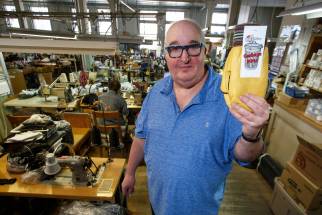One man’s trash… Raber Gloves’ Garbage Mitts went from being dumpster darlings to the must-have Winnipeg winter accessory
Read this article for free:
or
Already have an account? Log in here »
To continue reading, please subscribe:
Monthly Digital Subscription
$0 for the first 4 weeks*
- Enjoy unlimited reading on winnipegfreepress.com
- Read the E-Edition, our digital replica newspaper
- Access News Break, our award-winning app
- Play interactive puzzles
*No charge for 4 weeks then price increases to the regular rate of $19.00 plus GST every four weeks. Offer available to new and qualified returning subscribers only. Cancel any time.
Monthly Digital Subscription
$4.75/week*
- Enjoy unlimited reading on winnipegfreepress.com
- Read the E-Edition, our digital replica newspaper
- Access News Break, our award-winning app
- Play interactive puzzles
*Billed as $19 plus GST every four weeks. Cancel any time.
To continue reading, please subscribe:
Add Free Press access to your Brandon Sun subscription for only an additional
$1 for the first 4 weeks*
*Your next subscription payment will increase by $1.00 and you will be charged $16.99 plus GST for four weeks. After four weeks, your payment will increase to $23.99 plus GST every four weeks.
Read unlimited articles for free today:
or
Already have an account? Log in here »
Hey there, time traveller!
This article was published 28/02/2022 (1379 days ago), so information in it may no longer be current.
‘I am the wrong person to complain to about the weather,” Howard Raber says jubilantly midway through a Winnipeg January, wearing a golf shirt as he opens the door to his family’s factory on McDermot Avenue.
Warmth in Winnipeg
Cold and snowy winters are a fact of life in Winnipeg, and this winter has proven to be colder and snowier than most.
Cold and snowy winters are a fact of life in Winnipeg, and this winter has proven to be colder and snowier than most.
Amid blizzards, extreme temperature warnings and icy breezes that can freeze skin in only a minute, there’s always something warm that can make these chilly months bearable.
Whether it’s to fight off winter’s chill or to create recreational activities, Winnipeg needs warmth to make it happen. Sometimes it is even the warmth in someone’s heart.
So maybe throw another log on the fire, or inch that blanket up a little further and join the Free Press on our investigation of this elusive, yet essential item of a Winnipeg winter.
Warmth.
Raber does not mind the cold. It’s the reason he is in business.
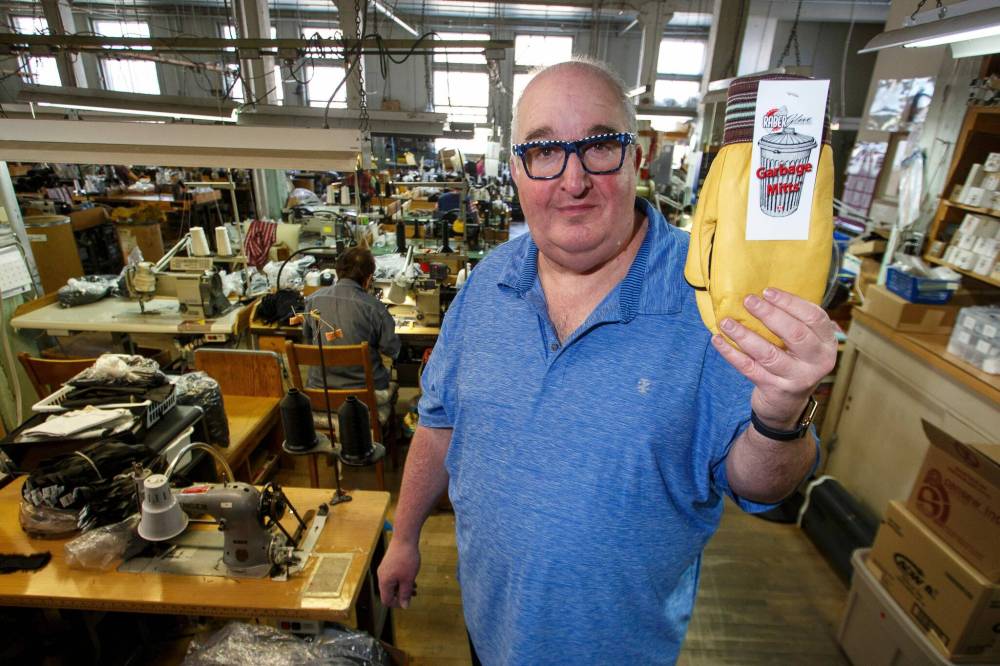
Had his grandparents immigrated in 1925 to a warmer place, their grandson’s opinion on the windchill might differ. But the ancestors chose Winnipeg — not such a bad place to be in the business of making gloves.
When it’s freezing outside, which in the wintertime is often, if not always, Howard Raber considers himself especially lucky. “When it’s cold out, we are everybody’s best friend.”
It has been like that since 1941, when Raber’s grandfather Abraham and Abraham’s teenage son Sunny started the Raber Glove Manufacturing Co. Ltd. The company has made hundreds of thousands of pairs of gloves: dress gloves, beekeeper’s gloves, work gloves, fire-retardant gauntlet gloves, the high gauntlet glove worn by the Royal Canadian Mounted Police during their famous musical ride.
But of all those gloves, the company’s biggest and most well-known calling card has a name, inspired by its origins, that seems antithetical to it becoming a hot commodity: the Garbage Mitt.
“One American vendor called me and said, ‘Howard, is it a good idea to call your products garbage?’” Raber recalls.
He gets this response often from the uninitiated. But he liked the name so much that in 2012, after decades making the mitts, Raber Glove trademarked the trashy moniker. Other companies may make mitts, but only Raber Glove can say its mitts are Garbage.

“He didn’t understand,” Raber says. “The Garbage Mitt is a Winnipeg thing.”
● ● ●
There’s a reason for the name. Beginning in the 1950s, the unlined version of the glove was the hand-wear of choice for the City of Winnipeg’s trash collectors, who wore them year-round, even in summer.
The leather was durable. It did not rip. When handling glass and sharp metals, the gloves offered protection from cuts and scrapes. The leather was well-sewn and thick enough to prevent garbage water from ever touching flesh.
The original garment was a cowhide mitt with a removable liner.

“We were given no uniform, no hats, no nothing,” says Bob Pruden, a Winnipeg garbageman for three summers in the mid-1960s. “Nothing was issued except for a pair of Garbage Mitts.”
Work-wear has long been a source of consumer inspiration. The thinking goes that if a pair of pants is hardy enough for a carpenter, or a jacket warm enough for a Winnipeg bus driver, it must be good enough for the average customer. But the Garbage Mitt may be the only instance of a fashion trend originating from the dumpster.
Long before Pruden, now 74, started collecting trash, he was already a fan of Garbage Mitts, a style many companies adopted and a term that entered the local lexicon.
“The mitts were ubiquitous,” says Pruden who said garbage collecting was the best job ever. “I wore them everywhere and for everything, except to church.”
He wore them to school, to play road hockey, and even on the ice, where the mitts served as his first hockey gloves.

His father had to write his name inside in indelible ink, so they wouldn’t mistakenly be taken home by a classmate or friend with an identical pair. “Not much chance of that, because we hardly took them off.”
The Garbage Mitt was a winning look for kids, adults and even competitive athletes: in an era of ice-cold curling clubs, the Garbage Mitt became a choice piece of gear at local rinks.
“Warmth-wise, it was the better glove to wear,” says Connie Laliberte, who won junior provincial titles in 1976 and ‘77, and skipped the first Manitoba women’s team — with Chris More, and her own sisters Corinne Peters and Janet Arnott — to a world title in 1984.
“I know all of us wore them in 1984,” says Laliberte, considered one of the province’s best curlers ever. “They certainly were prominent in our province.”
So prominent that when Winnipeg’s Katherine Barber was assembling the first edition of the Canadian Oxford Dictionary, in 1998, “Garbage Mitt” was included: “GARBAGE MITT, n, slang, a thickly padded deerskin mitt, typically worn by garbagemen in the winter.”
CAA Manitoba drivers have the option of wearing the Garbage Mitt, and the organization started selling them to its members eight years ago. Over 1,000 CAA members bought Garbage Mitts this winter, as of the end of January. “It was our best year of sales ever,” said CAA president Tim Scott. “I have a pair right beside me.”

The mitts are sold nationally and internationally, and do well in other markets. But mention a Garbage Mitt to those who’ve never heard the term and you will be met with a dazed stare, like when a Saskatchewanian inexplicably and adorably refers to a hoodie as a “bunny hug.”
Even a prominent Canadian academic in the field of material culture, clothing and textiles was stumped by the Manitobaism. “Unfortunately, I have no idea what a garbage mitt is,” she wrote in response to an email inquiry for this story.
● ● ●
At the factory where the company has operated since 1964, Howard Raber leads a tour, beginning in the basement, where the first steps of assembly take place.
He knows the process backward and forward: though he only started full-time in 1985, he was essentially raised in the building, with his father and grandfather teaching him every element of manufacturing, customer service, communications and quality control.

From the University of Winnipeg, Raber got an undergraduate degree in psychology. At the factory on McDermot, he received his unofficial MBA, specializing in hentshkes, the Yiddish word for gloves.
Other than the people working the machines, nothing about the hentshke-making process has changed — not even the machines. As many manufacturers favour computerization or automation, Raber says that is not an option he can consider. Appropriately, the work must be done by hand.
“When you’re working with glove leather, there’s so many factors to consider,” the 61-year-old says over the hum of sewing machines older than he is. “We have not changed anything. What you see here is the same as it’s been done since day one.”
In the basement, workers use decade-old dies to cut the cow’s leather, pulling it first to ensure it’s wide enough to span the knuckles while retaining its stretch. Each mitt is a relatively simple product.
“You’ve got two palms, two backs, two thumbs, that’s 72 pieces to a dozen,” Raber says. Nearby, a steady hand paints white numbers onto dress gloves for the RCMP, one of many national organizations with whom the company has a contract.

Upstairs, in an open factory floor that hasn’t changed in nearly 50 years, the process continues: stitches as small as 3/32 of an inch are made. The lining is sewn in, as are the cuffs. All gloves are turned, finger by finger, and pressed on original brass and nickel-plated boards, heated by steam from the basement’s boiler. They are then examined for imperfections. At each step of the piecework operation, the workers go at their own steady pace.
Raber cares about efficiency, but cannot tell you how many gloves are made in one hour or in one day. It varies. His concern is that whichever number of products is completed, each is to specification and to plan. The product is not just respected, it is “revered.” That’s not something which can be rushed.
He does not sew, but he can step in on the other points in the assembly line if need be.
“There are no job descriptions when you own a company,” he says. He doesn’t have a secretary. “People ask, ‘Mr. Raber, why do you answer your own phone?’ I’m going, ‘Who else is supposed to answer the call?’”
Raber was the one who answered at the door a few years ago when Bob Pruden showed up to the factory. The ex-garbageman had a friend in B.C. whose grandson couldn’t comprehend the idea of a “Garbage” mitt, so Pruden went to the source, where Raber treated him to a short tour.
“It looked very retro. From seeing factories on TV, everything is mechanized. There was none of that there. It was also very cool that with all the manufacturing which has been outsourced, that this has been retained in Winnipeg,” he said. “I liked that.”
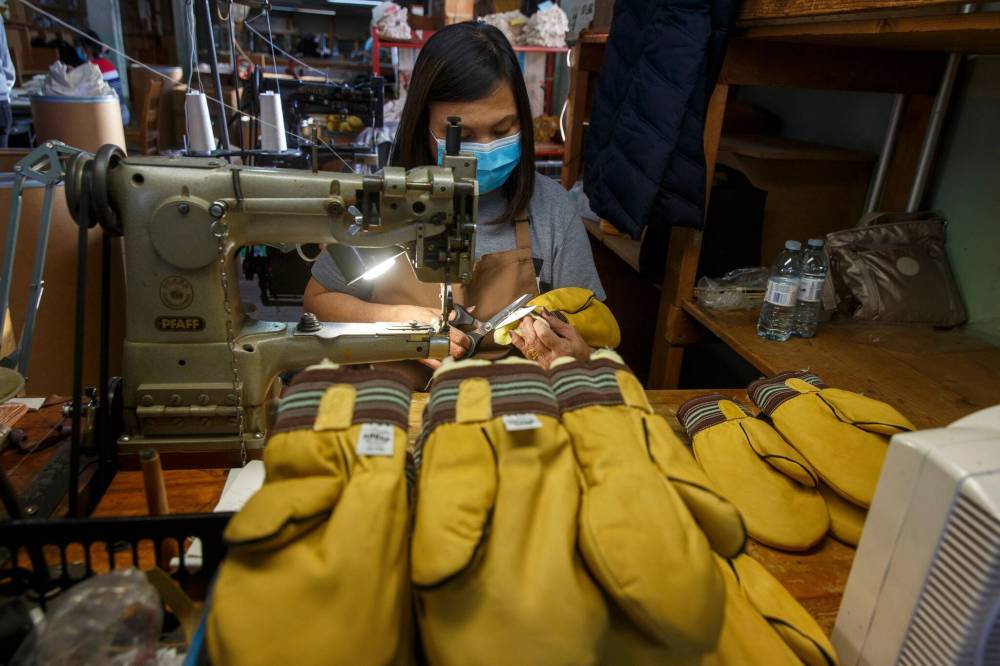
Pruden didn’t want to take up too much of Raber’s time, but was struck by the glove-maker’s directness. “He struck me as a very honest man,” he says. “No pretense. I came away very impressed, with a really good feeling as a lifelong Winnipegger.”
Loyalty is very important to the company, Raber says; many of his employees have been with him for over a decade, some over 20, and in the case of his office manager, Esther, nearly 40.
Modesty and humility also matters: some people may not know the name Raber Glove is the one behind the Garbage Mitt, he says, and that doesn’t bother him, but they recognize the product.
“I never tell anyone we make a good product. The customer decides that.”
And sometimes the customer is dissatisfied. What then? He or his staff call them to see what happened. Was there a defect? Was there an issue with the fabric? That’s one way to ensure the mitt fits the same in 2022 as it did in 1964.
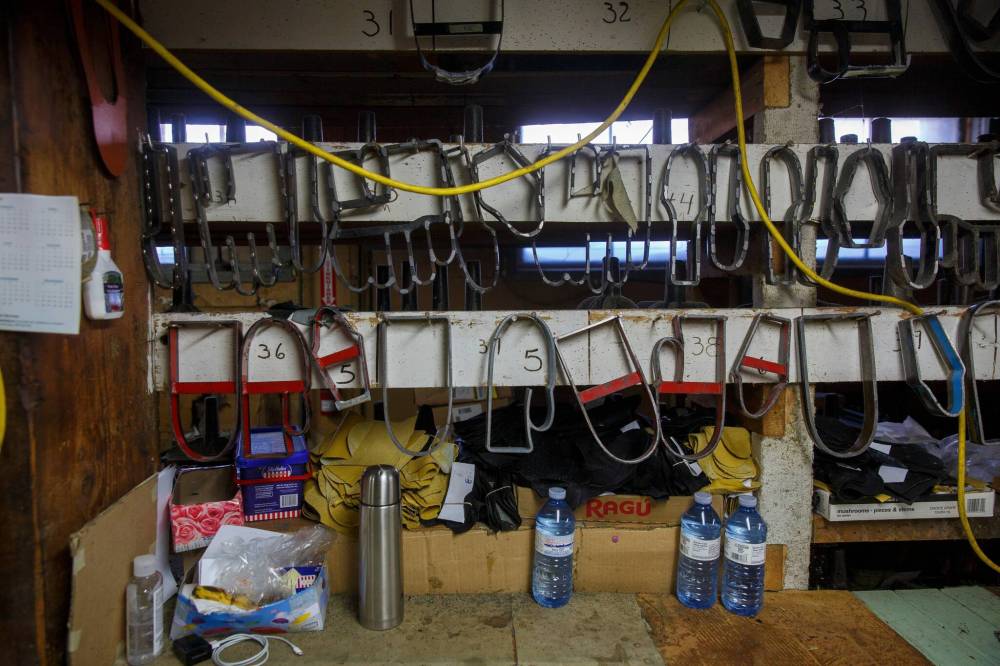
“I don’t look at negativity as negativity,” he says. “I look at it as negativity with a chance to grow.” Like most things, he learned that from his predecessors.
Raber remembers getting his first big order back in the 1980s. He walked into his grandfather’s office and proudly put the paperwork on the table. There wasn’t much of a response. A few months passed, and the big order was filled. “My grandfather called me into his office and says ‘great job,’” he recalls. “He said, ‘It’s one thing to take an order. It’s another thing to see it through to completion.’”
Another thing he learned: making gloves is a team effort. Every person up and down the line is integral and should be treated as such. “It’s mishpucha (Yiddish for family),” he says. It takes a village to make a Garbage Mitt, and it takes one like Winnipeg to make something called the Garbage Mitt a local treasure.
“The bottom line is the product and the customer,” he says, sitting at his desk after wrapping up the tour. It does take a certain measure of confidence in that product to proudly proclaim it as “garbage.”
His phone rings. “I think I have to get back to the trenches,” he says before answering.
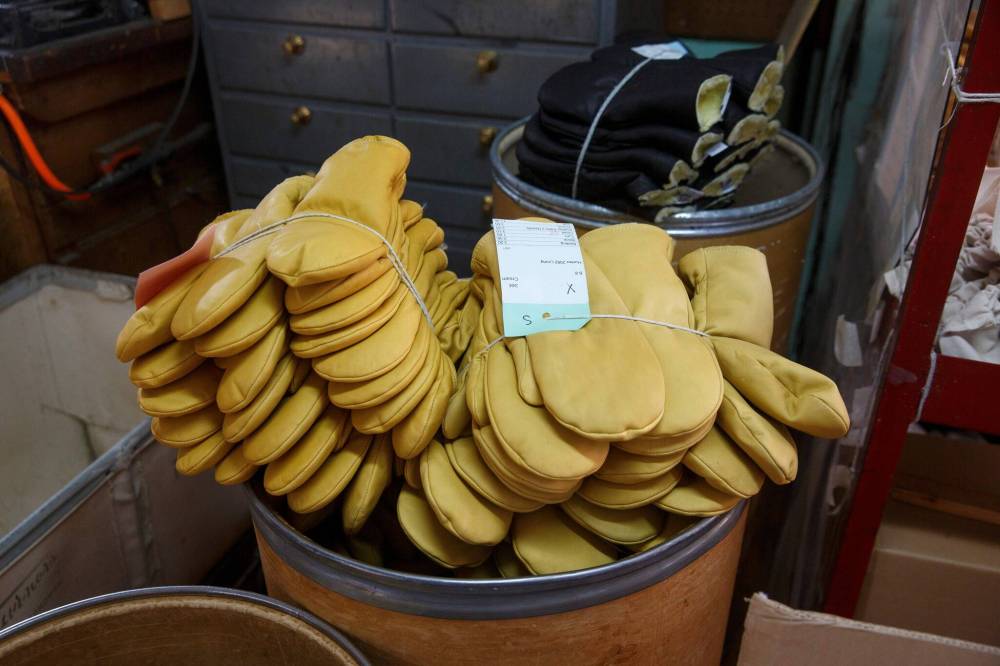
“Hello, Raber Glove,” he sings into the phone.
ben.waldman@winnipegfreepress.com

Ben Waldman covers a little bit of everything for the Free Press.
Our newsroom depends on a growing audience of readers to power our journalism. If you are not a paid reader, please consider becoming a subscriber.
Our newsroom depends on its audience of readers to power our journalism. Thank you for your support.








